Best British – Ladies Day
The Iris Blogger talks to Abena Taylor-Smith about her debut film.
Abena Taylor-Smith is the writer and director of
Ladies Day. Set in a Sheffield hair salon, it’s her filmmaking debut and has been shortlisted for this year’s Best British award, sponsored by Pinewood Studios. She is also a writer for Gal-dem, the online and print magazine written by women of colour and non-binary people of colour. Here she talks to the Iris Blogger about her career so far and her experience of making the film.
IRIS BLOGGER: Where did the idea for
Ladies Day come from? The setting and characters are very believable. Were they drawn from life?
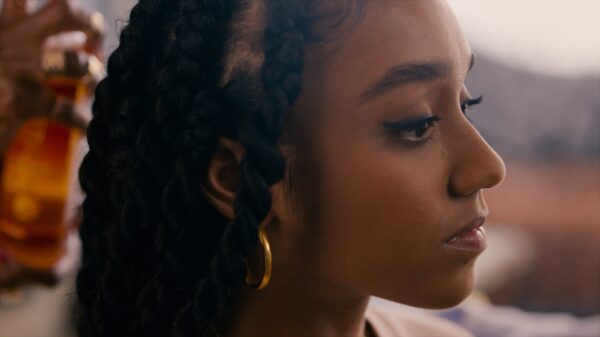 ABENA TAYLOR-SMITH:
ABENA TAYLOR-SMITH: I grew up going to hair salons and wanted to recreate that feeling of being taken care of, the lushness and languor and the sitting around chatting for hours. The characters are fictional but always based on a tiny nugget of truth. I think the desire to be liked and to fit in are pretty universal experiences.
IB: For a short film, it has quite an ensemble feel.
ATS: From the start I knew I wanted an ensemble cast because the film is about a group of women of colour, hanging out in an all-female space. You don’t see that very often but it happens in real life all the time. I wanted to show that side of life and knew that I’d need a fairly big cast to pull it off.
IB: Was it difficult casting such a range of strong characters?
ATS: It wasn’t difficult to find the actors, they all came to auditions or sent self-tapes. I was honoured by how many people applied. They all knew it was a short film by a first-time director and they were still enthusiastic about being part of it.
IB: How much rehearsal and preparation time did you have with them?
ATS: We only had four hours to rehearse.
IB: Wow.
ATS: We did a couple of line runs, talked about the script, the meanings of certain lines, how the character would behave in a certain situation and so on. My favourite part was the hot seating because it was so spontaneous and exciting. All the actors joined in asking questions that they thought of on the spot and the answers that we drew out of it brought the characters to life. I think the most important thing about that time we had was for everyone to meet each other before the shoot. It made it easier for them to jump straight in to being these charismatic women who’ve known each other for years.
IB: You studied biomedical science at university. How did you make the leap to writing and directing a short film?
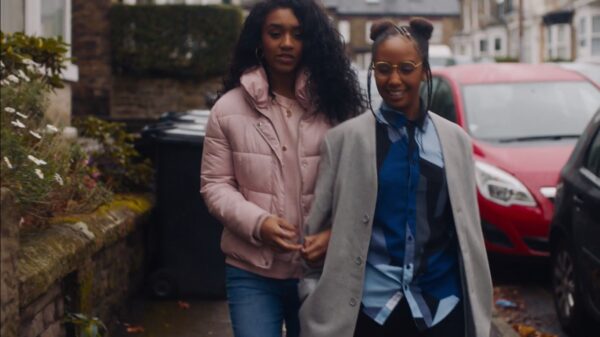 ATS:
ATS: I grew up in an arts-loving house and that comes from my parents. We always watched films and TV together, then talked about them obsessively afterwards. They love music so I grew up listening to whatever they were enjoying at the time, and I read constantly.
I loved English Literature at school and most people who knew me then were surprised that I didn’t take it further. I just hated that, when it came to coursework, the marks felt so arbitrary; and if the examiner didn’t agree with your analysis, regardless of how well you had justified your points, you’d be marked down. I was also never very good at finding positive things to write about work that I hated.
In my family there was also an emphasis on pursuing more academic subjects. The classic question when you say you want to study an arts subject is, ‘But what are you going to
do with that?’ It never feels like there’s a suitably impressive answer.
So, by the time I was 17, I was drawn towards certainty and studying subjects with a clear ‘right’ or ‘wrong’ answer. I was good at most subjects at school and really enjoyed chemistry and biology, so I thought I’d become a medical researcher.
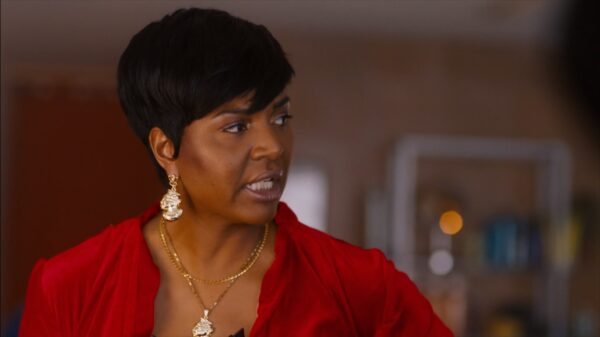
Then I got to university and realised that a lot of higher level science is subjective too. The point is to collect data and tell a story about what it shows you. Depending on who is doing the data collection and analysis, the outcome of the story will be different.
IB: And was it difficult balancing all those different interests?
ATS: Honestly, I found it very difficult. Artsy stuff definitely had to take a back seat. But in my spare time I started gravitating towards film without realising it. I was in cinema society, I volunteered for student cinema conferences and wrote film reviews for student media. Towards the end of my final year, I started cold pitching to magazines asking if they wanted reviews. Gal-dem wrote back to me, so that’s how I started writing for them. When I graduated, I got a job in a cinema and I kept writing in my spare time.
Then, in March 2017, I saw an advert for ShortFLIX. It was a Creative England scheme for 18-25-year-olds who loved film, hadn’t been to film school and wanted to make a short. It seemed perfect for me. The idea I pitched to the ShortFLIX panel was Ladies Day.
IB: Has making
Ladies Day given you the bug to make more films, either another short or maybe even a feature?
ATS: Yes, I loved it and I
definitely want to make more films.
IB: How important was representation when you were making the film?
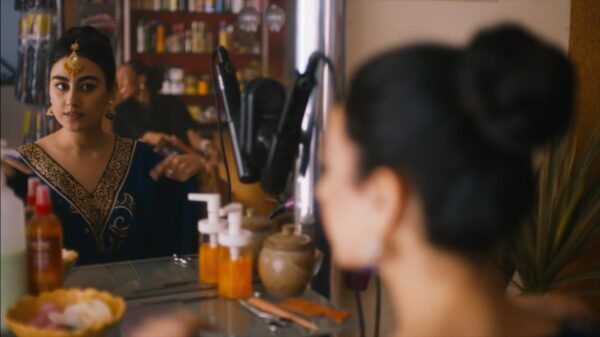 ATS:
ATS: I’ve seen a million black British stories set in London and very few – if any – set in the north, so I wrote into the script that the setting was Sheffield. And in terms of the plot, I really wanted to show black women just living their lives, doing mundane things, not experiencing trauma or violence.
I wrote multiple black, queer characters because when I was younger, I really needed to know that there is never just one black queer person within a given community.
From a writing perspective, that multiplicity was also super helpful in taking the pressure off of a single queer character to represent an entire group of people. When you have just one, it’s easy for them to be a stereotype. When you have a few queer characters woven into the fabric of the story, you can play around and show some variety.
A huge part of going to the salon is about women talking to each other and maintain these beautiful inter-generational friendships. I wanted to do justice to female characters who weren’t just in their twenties because so much of my strength and guidance has come from older women in my life.
In terms of the crew, I wanted as many people of colour as possible, especially for costume, hair and make-up as the looks in this film are so important. These women go to the salon to look fabulous so it was essential to build a crew who were going to do justice to the aesthetic I had in mind.
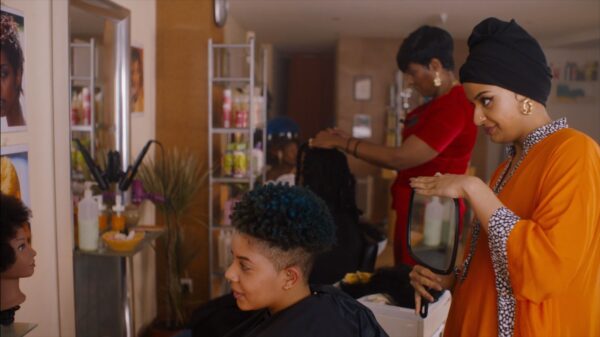 IB:
IB: We've seen an increase in the number of films from or about the black community in the Best British category. Do you think we could be at a bit of a watershed moment for black British cinema?
ATS: Time will tell whether or not this is a watershed. If, in the next fifteen to twenty years, my generation of filmmakers can’t get paid work and have to move into other industries to survive; and twenty years after that, the teenagers coming up have no industry role models, so the concept of black-British cinema is as unheard of to them as it was to me in the early noughties, then we’ll know that what we’re living through right now wasn’t a watershed.
There is still so much that needs to be done. It’s not just about the films that do get made, it’s about the demographic of the people who are able to green-light projects; make it as successful talent agents, managers, script editors, producers, festival programmers, critics, development executives, finance administrators and entrepreneurs. There are lots of talented young black people who start working in the arts at lower levels but are systematically passed up for jobs that command higher salaries and greater power or influence. We need to make systemic changes so that more people of colour (especially women and non-binary people of colour) are retained and nurtured in all aspects of the industry and at all levels of seniority.
 ABENA TAYLOR-SMITH: I grew up going to hair salons and wanted to recreate that feeling of being taken care of, the lushness and languor and the sitting around chatting for hours. The characters are fictional but always based on a tiny nugget of truth. I think the desire to be liked and to fit in are pretty universal experiences.
IB: For a short film, it has quite an ensemble feel.
ATS: From the start I knew I wanted an ensemble cast because the film is about a group of women of colour, hanging out in an all-female space. You don’t see that very often but it happens in real life all the time. I wanted to show that side of life and knew that I’d need a fairly big cast to pull it off.
IB: Was it difficult casting such a range of strong characters?
ATS: It wasn’t difficult to find the actors, they all came to auditions or sent self-tapes. I was honoured by how many people applied. They all knew it was a short film by a first-time director and they were still enthusiastic about being part of it.
IB: How much rehearsal and preparation time did you have with them?
ATS: We only had four hours to rehearse.
IB: Wow.
ATS: We did a couple of line runs, talked about the script, the meanings of certain lines, how the character would behave in a certain situation and so on. My favourite part was the hot seating because it was so spontaneous and exciting. All the actors joined in asking questions that they thought of on the spot and the answers that we drew out of it brought the characters to life. I think the most important thing about that time we had was for everyone to meet each other before the shoot. It made it easier for them to jump straight in to being these charismatic women who’ve known each other for years.
IB: You studied biomedical science at university. How did you make the leap to writing and directing a short film?
ABENA TAYLOR-SMITH: I grew up going to hair salons and wanted to recreate that feeling of being taken care of, the lushness and languor and the sitting around chatting for hours. The characters are fictional but always based on a tiny nugget of truth. I think the desire to be liked and to fit in are pretty universal experiences.
IB: For a short film, it has quite an ensemble feel.
ATS: From the start I knew I wanted an ensemble cast because the film is about a group of women of colour, hanging out in an all-female space. You don’t see that very often but it happens in real life all the time. I wanted to show that side of life and knew that I’d need a fairly big cast to pull it off.
IB: Was it difficult casting such a range of strong characters?
ATS: It wasn’t difficult to find the actors, they all came to auditions or sent self-tapes. I was honoured by how many people applied. They all knew it was a short film by a first-time director and they were still enthusiastic about being part of it.
IB: How much rehearsal and preparation time did you have with them?
ATS: We only had four hours to rehearse.
IB: Wow.
ATS: We did a couple of line runs, talked about the script, the meanings of certain lines, how the character would behave in a certain situation and so on. My favourite part was the hot seating because it was so spontaneous and exciting. All the actors joined in asking questions that they thought of on the spot and the answers that we drew out of it brought the characters to life. I think the most important thing about that time we had was for everyone to meet each other before the shoot. It made it easier for them to jump straight in to being these charismatic women who’ve known each other for years.
IB: You studied biomedical science at university. How did you make the leap to writing and directing a short film?
 ATS: I grew up in an arts-loving house and that comes from my parents. We always watched films and TV together, then talked about them obsessively afterwards. They love music so I grew up listening to whatever they were enjoying at the time, and I read constantly.
I loved English Literature at school and most people who knew me then were surprised that I didn’t take it further. I just hated that, when it came to coursework, the marks felt so arbitrary; and if the examiner didn’t agree with your analysis, regardless of how well you had justified your points, you’d be marked down. I was also never very good at finding positive things to write about work that I hated.
In my family there was also an emphasis on pursuing more academic subjects. The classic question when you say you want to study an arts subject is, ‘But what are you going to do with that?’ It never feels like there’s a suitably impressive answer.
So, by the time I was 17, I was drawn towards certainty and studying subjects with a clear ‘right’ or ‘wrong’ answer. I was good at most subjects at school and really enjoyed chemistry and biology, so I thought I’d become a medical researcher.
ATS: I grew up in an arts-loving house and that comes from my parents. We always watched films and TV together, then talked about them obsessively afterwards. They love music so I grew up listening to whatever they were enjoying at the time, and I read constantly.
I loved English Literature at school and most people who knew me then were surprised that I didn’t take it further. I just hated that, when it came to coursework, the marks felt so arbitrary; and if the examiner didn’t agree with your analysis, regardless of how well you had justified your points, you’d be marked down. I was also never very good at finding positive things to write about work that I hated.
In my family there was also an emphasis on pursuing more academic subjects. The classic question when you say you want to study an arts subject is, ‘But what are you going to do with that?’ It never feels like there’s a suitably impressive answer.
So, by the time I was 17, I was drawn towards certainty and studying subjects with a clear ‘right’ or ‘wrong’ answer. I was good at most subjects at school and really enjoyed chemistry and biology, so I thought I’d become a medical researcher.
 Then I got to university and realised that a lot of higher level science is subjective too. The point is to collect data and tell a story about what it shows you. Depending on who is doing the data collection and analysis, the outcome of the story will be different.
IB: And was it difficult balancing all those different interests?
ATS: Honestly, I found it very difficult. Artsy stuff definitely had to take a back seat. But in my spare time I started gravitating towards film without realising it. I was in cinema society, I volunteered for student cinema conferences and wrote film reviews for student media. Towards the end of my final year, I started cold pitching to magazines asking if they wanted reviews. Gal-dem wrote back to me, so that’s how I started writing for them. When I graduated, I got a job in a cinema and I kept writing in my spare time.
Then, in March 2017, I saw an advert for ShortFLIX. It was a Creative England scheme for 18-25-year-olds who loved film, hadn’t been to film school and wanted to make a short. It seemed perfect for me. The idea I pitched to the ShortFLIX panel was Ladies Day.
IB: Has making Ladies Day given you the bug to make more films, either another short or maybe even a feature?
ATS: Yes, I loved it and I definitely want to make more films.
IB: How important was representation when you were making the film?
Then I got to university and realised that a lot of higher level science is subjective too. The point is to collect data and tell a story about what it shows you. Depending on who is doing the data collection and analysis, the outcome of the story will be different.
IB: And was it difficult balancing all those different interests?
ATS: Honestly, I found it very difficult. Artsy stuff definitely had to take a back seat. But in my spare time I started gravitating towards film without realising it. I was in cinema society, I volunteered for student cinema conferences and wrote film reviews for student media. Towards the end of my final year, I started cold pitching to magazines asking if they wanted reviews. Gal-dem wrote back to me, so that’s how I started writing for them. When I graduated, I got a job in a cinema and I kept writing in my spare time.
Then, in March 2017, I saw an advert for ShortFLIX. It was a Creative England scheme for 18-25-year-olds who loved film, hadn’t been to film school and wanted to make a short. It seemed perfect for me. The idea I pitched to the ShortFLIX panel was Ladies Day.
IB: Has making Ladies Day given you the bug to make more films, either another short or maybe even a feature?
ATS: Yes, I loved it and I definitely want to make more films.
IB: How important was representation when you were making the film? ATS: I’ve seen a million black British stories set in London and very few – if any – set in the north, so I wrote into the script that the setting was Sheffield. And in terms of the plot, I really wanted to show black women just living their lives, doing mundane things, not experiencing trauma or violence.
I wrote multiple black, queer characters because when I was younger, I really needed to know that there is never just one black queer person within a given community.
From a writing perspective, that multiplicity was also super helpful in taking the pressure off of a single queer character to represent an entire group of people. When you have just one, it’s easy for them to be a stereotype. When you have a few queer characters woven into the fabric of the story, you can play around and show some variety.
A huge part of going to the salon is about women talking to each other and maintain these beautiful inter-generational friendships. I wanted to do justice to female characters who weren’t just in their twenties because so much of my strength and guidance has come from older women in my life.
In terms of the crew, I wanted as many people of colour as possible, especially for costume, hair and make-up as the looks in this film are so important. These women go to the salon to look fabulous so it was essential to build a crew who were going to do justice to the aesthetic I had in mind.
ATS: I’ve seen a million black British stories set in London and very few – if any – set in the north, so I wrote into the script that the setting was Sheffield. And in terms of the plot, I really wanted to show black women just living their lives, doing mundane things, not experiencing trauma or violence.
I wrote multiple black, queer characters because when I was younger, I really needed to know that there is never just one black queer person within a given community.
From a writing perspective, that multiplicity was also super helpful in taking the pressure off of a single queer character to represent an entire group of people. When you have just one, it’s easy for them to be a stereotype. When you have a few queer characters woven into the fabric of the story, you can play around and show some variety.
A huge part of going to the salon is about women talking to each other and maintain these beautiful inter-generational friendships. I wanted to do justice to female characters who weren’t just in their twenties because so much of my strength and guidance has come from older women in my life.
In terms of the crew, I wanted as many people of colour as possible, especially for costume, hair and make-up as the looks in this film are so important. These women go to the salon to look fabulous so it was essential to build a crew who were going to do justice to the aesthetic I had in mind.
 IB: We've seen an increase in the number of films from or about the black community in the Best British category. Do you think we could be at a bit of a watershed moment for black British cinema?
ATS: Time will tell whether or not this is a watershed. If, in the next fifteen to twenty years, my generation of filmmakers can’t get paid work and have to move into other industries to survive; and twenty years after that, the teenagers coming up have no industry role models, so the concept of black-British cinema is as unheard of to them as it was to me in the early noughties, then we’ll know that what we’re living through right now wasn’t a watershed.
There is still so much that needs to be done. It’s not just about the films that do get made, it’s about the demographic of the people who are able to green-light projects; make it as successful talent agents, managers, script editors, producers, festival programmers, critics, development executives, finance administrators and entrepreneurs. There are lots of talented young black people who start working in the arts at lower levels but are systematically passed up for jobs that command higher salaries and greater power or influence. We need to make systemic changes so that more people of colour (especially women and non-binary people of colour) are retained and nurtured in all aspects of the industry and at all levels of seniority.
IB: We've seen an increase in the number of films from or about the black community in the Best British category. Do you think we could be at a bit of a watershed moment for black British cinema?
ATS: Time will tell whether or not this is a watershed. If, in the next fifteen to twenty years, my generation of filmmakers can’t get paid work and have to move into other industries to survive; and twenty years after that, the teenagers coming up have no industry role models, so the concept of black-British cinema is as unheard of to them as it was to me in the early noughties, then we’ll know that what we’re living through right now wasn’t a watershed.
There is still so much that needs to be done. It’s not just about the films that do get made, it’s about the demographic of the people who are able to green-light projects; make it as successful talent agents, managers, script editors, producers, festival programmers, critics, development executives, finance administrators and entrepreneurs. There are lots of talented young black people who start working in the arts at lower levels but are systematically passed up for jobs that command higher salaries and greater power or influence. We need to make systemic changes so that more people of colour (especially women and non-binary people of colour) are retained and nurtured in all aspects of the industry and at all levels of seniority. 
